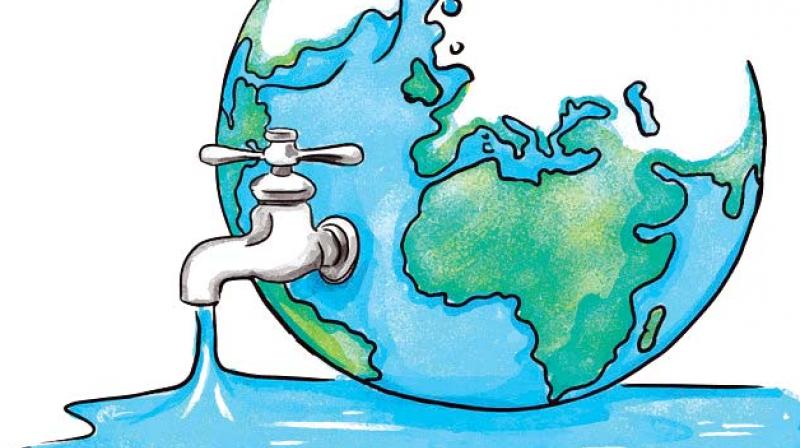Ecoistic – Hunger Games: Climate change and agriculture

There is a serious threat, today, more than ever before, of the rising impacts of climate change on the Indian agricultural situation. In addition to climate change the slow and steady warming of the Indian Ocean has also added to the acute seriousness of India’s food security and associated challenges. It is high time governments took a serious look at sustaining agriculture and allied industries, especially in the rural sectors of this country.
If this challenge is not addressed immediately, the situation could easily get out of hand, leading to widespread chaos. It is a known fact that India is home to more than 210-million hungry people. And this problem only seems to be getting worse. This estimate is also known to the Food and Agricultural Organisation of the United Nations, which is trying its best to influence tropical countries like India to manage natural resources and strengthen the capacity of people and institutions to address food insecurities in future. Apart from climate change affecting overall food production, issues such as ineffective storage, inappropriate facilities and inefficient distributions network across geographical regions must be dealt with also.
Additionally, the population of malnourished and hungry people too, has been increasing at a faster pace. And this is reflected in the Global Hunger Index (GHI) report which maps the various levels of hunger in more than a hundred countries. Based on the GHI analyses, report & study India has shifted from the 50th position in 2012 to 80th position in 2016. This Hunger Index is an inter-disciplinary and multi-dimensional statistical analysis that is used to describe the status of a country’s hunger situation. Interestingly, a lower position of any country in the Index means lower levels of hunger and lesser food insecurity.
This GHI is updated every year thereby measuring the progress and failures of various countries in the fight against hunger. The position of India in this Index is really disturbing since it is one of the largest producers of food grains across the world. Apart from these existing situations and conditions, warming of the Ocean is emerging as a new threat to food security in India. And this will be the greatest challenge for food production in the coming decades.
Another interesting, but, shocking development is that crops such as maize and wheat are also set to be severely affected in the coming few years due to warming. And this warming of the ocean is also going to adversely impact the quantity and diversity of marine species that are used as food & livelihood, leading to severe food insecurity across the globe. These erratic and negative developments are a matter of grave concern as climate change related developments in the ocean are almost five times greater and faster than those happening on land. The severe warming of the Indian Ocean is also affecting the rainfall patterns across continents thereby increasing the challenges for better food production. Some studies by the Indian Meteorological Dept., shows significant decrease in the annual rainfall over and across India. In fact the analysis of the historical rainfall data over the past 55 years reveals that there has been a decrease up to about 2.00 mm per year.
Therefore, for a healthy agricultural yield and to mitigate food insecurity, the governments should take these studies and analyses as the base of their investigation, to sustain the agricultural base and multiply its economic benefits in the larger interest of the society. More than half of India’s working population is engaged in farming and farm-related occupations. Despite this, agriculture accounts for just about 16 % of India’s GDP. Added to this, agricultural sector also suffers from low productivity, especially from small land holders. It is here that the Government must step-in in a much bigger way to improve the productivity of small farmers through large-scale rural advocacy, application of baseline technology at grassroots, exchange of appropriate technical know-how and knowledge-sharing besides creating awareness and sensitizing younger farming communities towards taking up agriculture as a lucrative profession since the entire world depends upon this important segment of population.
It is about time that the governments accelerate their efforts to improvise and strengthen agriculture and allied industries than waste its resources on short-lived & resource-guzzling industrial & developmental programmes that cannot be sustained in the long run….

